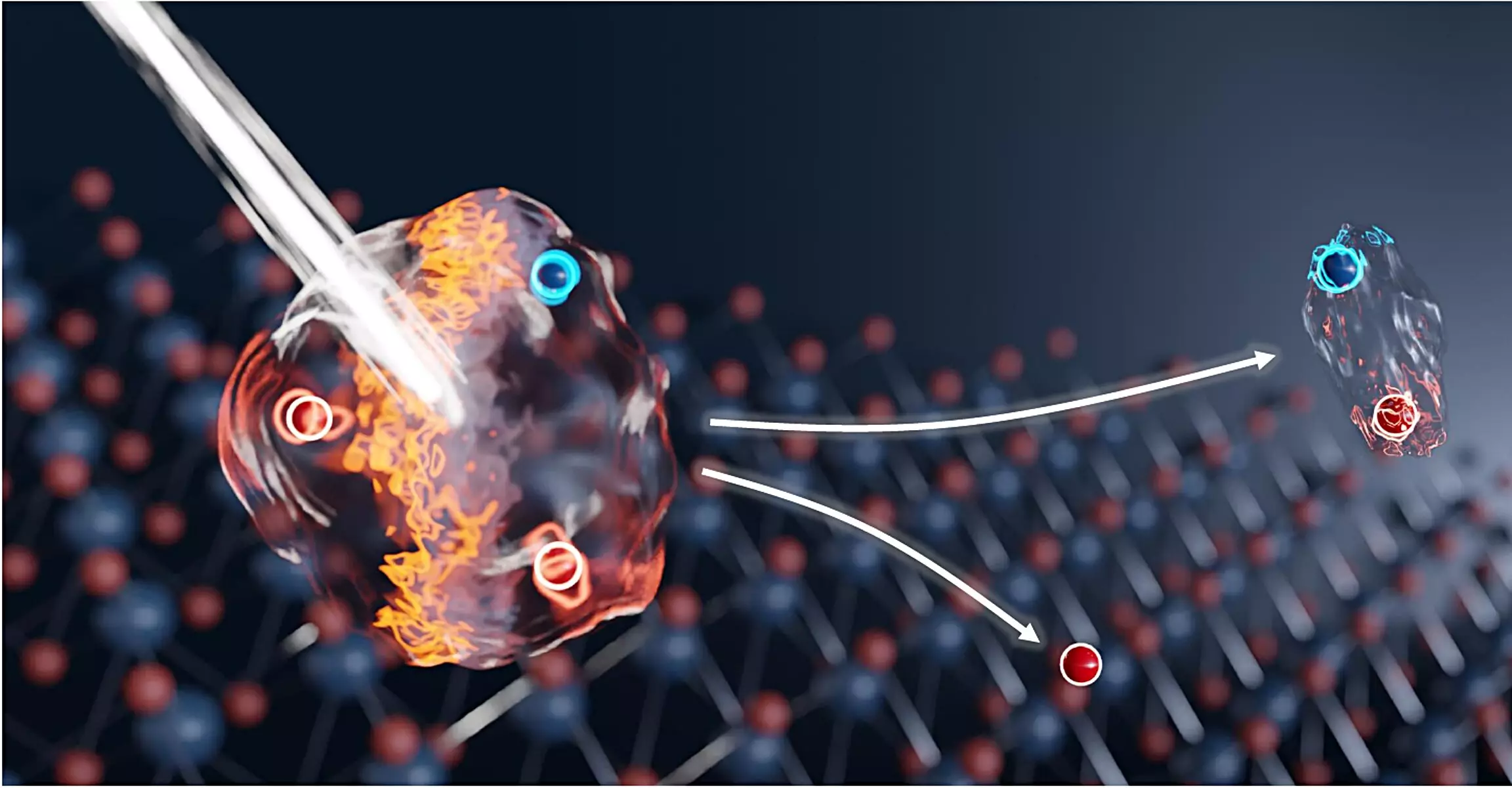Recent advancements in materials science have spotlighted the fascinating realm of two-dimensional (2D) materials, particularly their unique properties and potential applications in electronics and quantum technologies. Among the most promising discoveries emerges an experiment conducted by a collaborative team led by TU Dresden, which has made significant strides in manipulating luminescent particles within an ultra-thin 2D material. By inducing rapid state switching between electrically neutral excitons and charged trions, this research holds the promise to transform the landscape of optical data processing and flexible detectors.
At the core of this research lies a nuanced understanding of excitons and trions, which are vital excitations within semiconductor materials. Excitons are formed when an electron is excited and vacates its original state, leaving behind a positively charged vacancy known as a “hole.” The resultant electron-hole pair forms a bound entity called an exciton. When an additional electron is captured by this pair, it transforms into a trion, introducing a combination of electrical charge and enhanced light emission. This unique characteristic facilitates simultaneous electronic and optical manipulation, potentially leading to novel applications in various technological domains.
Current literature indicates that the transition between excitons and trions could serve as a foundational process for advanced electronic devices. Despite progress in promoting controlled transitions between these states in laboratory settings, the switching speeds have historically been limited. The recent study spearheaded by Prof. Alexey Chernikov has shattered these limitations, unlocking a new realm of swiftness in transitions that could become fundamental in realizing efficient, next-generation quantum technologies.
The innovative experimentation was executed at the Helmholtz-Zentrum Dresden-Rossendorf (HZDR) using a specialized facility featuring the FELBE free-electron laser. This powerful tool generates intense terahertz pulses—an electromagnetic frequency that straddles the boundary between radio waves and near-infrared radiation. The researchers targeted an atomically thin layer of molybdenum diselenide, cooling it to cryogenic temperatures and illuminating it with brief laser pulses to create excitons.
Upon generating excitons, the researchers induced a remarkable transformation as these excitons swiftly evolved into trions by seizing one of the abundant electrons present in the material. The pivotal moment occurred when terahertz radiation was directed at the material, prompting rapid reversion of trions back into excitons. The process occurred with unprecedented efficiency, breaking the bonds between excitons and their electrons within merely a few picoseconds—essentially a thousand times faster than previous electronic switching mechanisms.
The implications of these findings are broad and profound. With the potential to replicate such rapid state switching across various complex electronic states and material platforms, researchers could explore atypical quantum states that arise from robust interactions among numerous particles. Furthermore, the implications stretch into practical technology realms, including sensor technology and optical data processing.
For instance, integrating this effect into advanced modulators could lead to the creation of compact components capable of electronically controlling optically encoded data. In addition, the detection and imaging of terahertz radiation utilizes the demonstrated switching processes within atomically thin semiconductors, paving the way for versatile terahertz cameras with high pixel counts. These devices could function effectively even with relatively low intensity, given their sensitivity to subtle changes that trigger the exciton-trion dynamics.
The groundbreaking work conducted by the international team led by TU Dresden not only advances our understanding of exciton and trion dynamics but also lays the foundational framework for building future quantum devices. The ability to achieve rapid switching processes in two-dimensional materials could redefine optical data processing capabilities, ushering in an era of enhanced efficiency and miniaturization in technology design. As the research community continues to build upon these findings, the potential for applications stretching from flexible detectors to advanced optical systems becomes increasingly tangible, promising exciting developments in the realm of quantum technologies.

